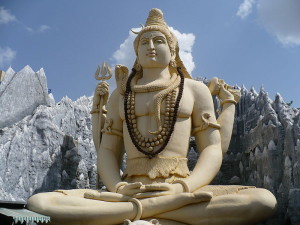Nepal Celebrates Shivaratri Festival
On Tuesday, February 17th, Nepal celebrated the annual Shivaratri Festival. With over 1 million devotees making their way from all over the world to an ancient temple in Kathmandu, the Nepalese government deployed a large scale security force for the country’s biggest religious event of the year.

The Shivaratri Festival
The Shivaratri Festival, or “Great Night of Shiva,” is a festival in honor of the Hindu god, Shiva. The festival celebrates the day that Shiva married the goddess of love, fertility, and devotion, Parvati. Shiva is considered one of the five primary forms of god in the polytheistic Hindu religion and also the lord of cosmic destruction and dance.
The Shivaratri celebration consists of an all-day fast and an all-night vigil called the jagaran at the Pashupatinath shrine in Kathmandu, the capital city of Nepal. The Pashupatinath temple, which is also a UNESCO world heritage site, is considered one of the most important Shiva temples in the world. It has a history dating back to 400 AD and also houses Shiva’s phallus.
Devotees offer special prayers to Lord Shiva by pouring milk and water on the shiv ling, a representation of Shiva, and adorning it with beautiful flowers. Hindu women in particular celebrate this special holiday: married women pray that their husbands will be blessed with long lives and unmarried women pray that they will find a husband as great as Shiva.
In addition to the one million devotees, there were also 6,000 sadhus in attendance. Sadhus are India’s wandering holy men who have renounced a material life. Their presence at the Shivaratri Festival has become a special attraction due to their usage of Bhang in different rituals. Bhang an intoxicant made from the cannabis plant, otherwise known as the marijuana plant, is widely used by attendees. It is also on this day that there is a temporary lifting of Nepal’s marijuana ban.
Numbers, Logistics, and Safety
In preparation for the large influx of people flowing into Nepal for the celebration, the Nepalese government deployed 3,400 personnel to escort Indian and Nepalese devotees, along with pilgrims from Malaysia, Indonesia, Singapore, Bhutan and Sri Lanka, to the temple for prayer. The escort force was comprised of nearly 579 police, 300 scouts, and 2,500 armed personnel.
This year, the temple opened at 3am and the first aarati, a ritual dance, was performed at 3:30am. After rituals were delayed last year, the temple administration tightened security to ensure that the day’s activities stayed strictly on schedule. Nepalaese President Ram Baran Yadav visited the temple in the evening and performed a puja, or the act of establishing a spiritual connection with a deity.
Beyond the celebrations taking place in Nepal, Shivaratri was also celebrated worldwide. Thousands of other Hindus in the Caribbean islands of Trinidad and Tobago spent the night in over 400 temples making offerings to their Lord Shiva.
